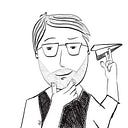GraphRAG, or Graph-based Retrieval-Augmented Generation, is a significant advancement in NLP and IR.Let’s explore the theoretical underpinnings of GraphRAG and how it enhances the performance of language models.
At its core, GraphRAG combines the power of graph-based knowledge representation with the flexibility of retrieval-augmented generation.
One, GraphRAG leverages the structured nature of graphs to capture complex relationships between concepts. Unlike traditional vector-based representations, graphs can explicitly model hierarchies, dependencies, and multi-hop connections. This structure aligns closely with how human knowledge is organized, allowing for more nuanced and contextually relevant information retrieval.
The graph structure also facilitates efficient traversal and exploration of related concepts.
When a query is processed, GraphRAG can navigate the knowledge graph to find not just directly relevant information, but also tangentially related concepts that may provide valuable context.
This mimics human cognitive processes, where we often draw connections between seemingly disparate ideas to form a comprehensive understanding.
Retrieval-augmented generation, the second pillar of GraphRAG, we know, make LLMs more…
